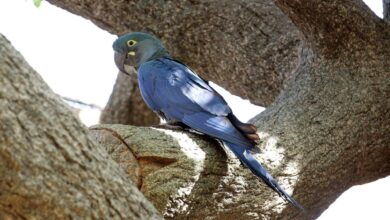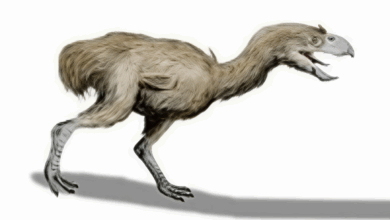Keeping cats indoors could blunt adverse effects to wildlife
Birds alighting on driveways and baby bunnies munching on lawn grass should keep something in mind: Beware the house cat.

Domestic cats can have big effects on local wildlife, according to a citizen-science project that tracked house cats and counted their prey. / Photo: Roland Kays
EurekAlert | NORTH CAROLINA STATE UNIVERSITY
Listen to this article
Leer en español: Los terribles efectos de los gatos en la vida silvestre
A new study shows that hunting by house cats can have big effects on local animal populations because they kill more prey, in a given area, than similar-sized wild predators. This effect is mostly concentrated relatively close to a pet cat's home, since most of their movement was a 100-meter radius of their homes, usually encompassing a few of their neighborhood's yards on either side.
Researchers from NC State University and the North Carolina Museum of Natural Sciences collaborated with scientists and citizen scientists from six countries to collect GPS cat-tracking data and prey-capture reports from 925 pet cats, with most coming from the U.S., U.K, Australia and New Zealand.
"Since they are fed cat food, pets kill fewer prey per day then wild predators, but their home ranges were so small that this effect on local prey ends up getting really concentrated," said Roland Kays, the paper's lead author. "Add to this the unnaturally high density of pet cats in some areas, and the risk to bird and small mammal population gets even worse.
"We found that house cats have a two- to 10-time larger impact on wildlife than wild predators – a striking effect," he said.
The researchers focused on the ecological impact of house cats – as opposed to feral cats – and enlisted hundreds of pet owners to track their cats to see where they went and report on the number of dead critters they brought home. Inexpensive GPS tracking devices measured distances traveled by these house cats, which spent their days both indoors and outdoors.
"We knew cats were killing lots of animals – some estimates show that cats in North America kill from 10 to 30 billion wildlife animals per year – but we didn't know the area in which that was happening, or how this compared with what we see in nature," Kays said.
Also read: Is your coffee contributing to malaria risk?
The researchers calculated the amount of prey killed per year by house cats and divided the number by the area in which the cats hunted. Some adjustments were made to the prey count as cats don't necessarily bring all their kills home.
The study showed that house cats killed an average of 14.2 to 38.9 prey per 100 acres, or hectare, per year.
The study also showed that cats do much of their damage to wildlife in disturbed habitats, like housing developments.
"Because the negative impact of cats is so local, we create a situation in which the positive aspects of wildlife, be they the songs of birds or the beneficial effects of lizards on pests, are least common where we would appreciate them most," said study co-author Rob Dunn, William Neal Reynolds Distinguished Professor of Applied Ecology at NC State. "Humans find joy in biodiversity, but we have, by letting cats go outdoors, unwittingly engineered a world in which such joys are ever harder to experience."
NC State's Arielle W. Parsons and Brandon Mcdonald co-authored the paper. Other co-authors include Troi Perkins from Dartmouth College; Shelby Powers from East Carolina University; Leonora Shell from SciStarter; Jenni L. McDonald and Holly Cole from the University of Exeter; Heidy Kikillus and Lisa Woods from Victoria University of Wellington; and Hayley Tindle and Philip Roetman from the University of South Australia.




